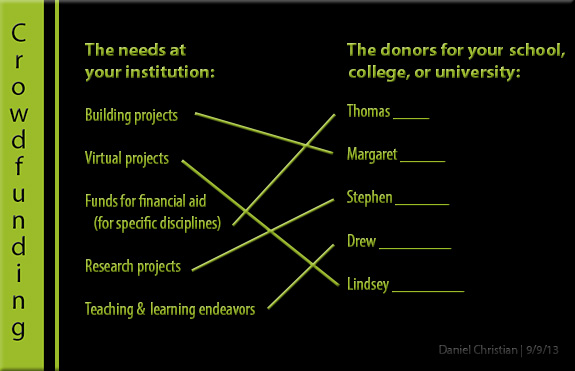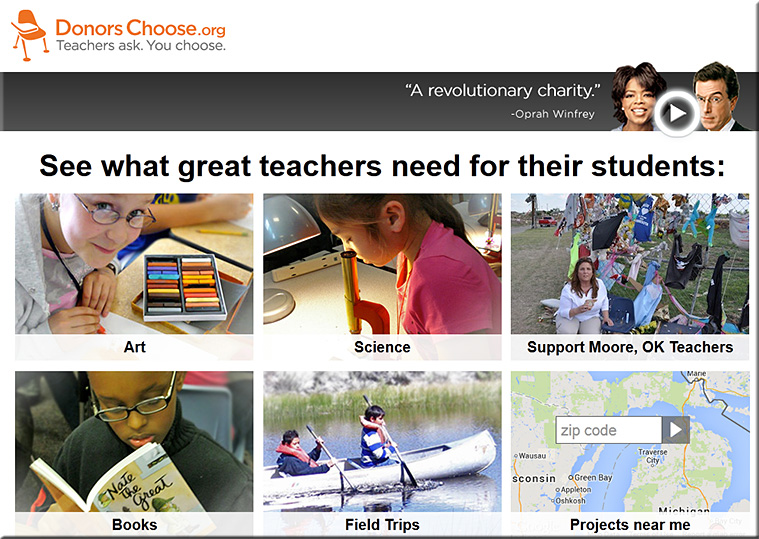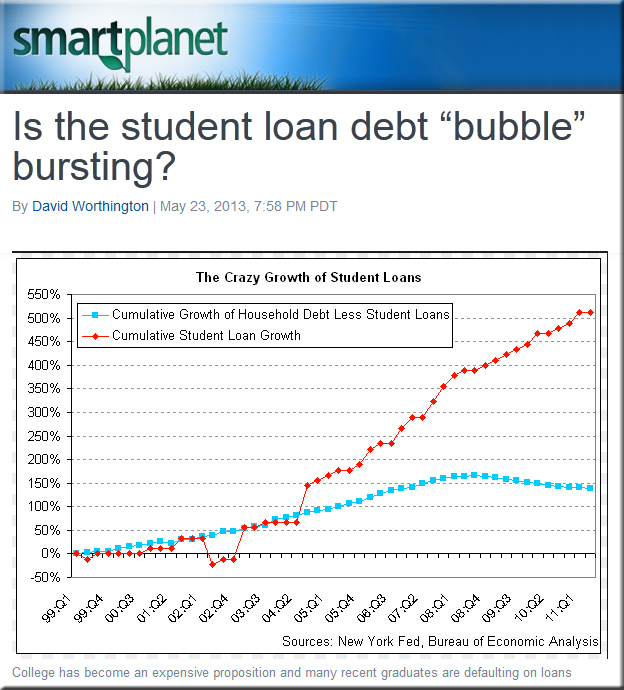
From DSC:
Match the needs of your institution with your donors’ passions!
In thinking about how to get the funding necessary to accomplish things, it seems to me that more people would give more of their resources if they knew what the specific needs were at a particular school, college, and/or university. This is where Web-based solutions could play a new, important role (and serve as another example of using technology strategically).
I was reminded of this possibility during a recent conversation with a faculty member from our Music Department. First, some background. My mother was/still is a piano teacher. My folks met due to music and my dad has sung throughout his lifetime. My siblings have each played 1 or more instruments. Music has been something that has been extremely positive for my folks’ marriage and was always heard throughout our home. (Not to mention that music can turn a bad day around for me.)
You can see where music was important to our family, to me…I have a passion for music. So when I heard of a need that our Music Department had, I was ready to get my wallet out on the spot.
I wonder how many more people would be struck like this if they only knew what the specific opportunities to contribute/make a difference were.
See below for some
related resources
on this topic.
Also see:
- Crowdfunding — from wikipedia.org
. - GoFundMe.com — Education-Schools-Learning
. - Scientists discover ‘crowdfunding’ as a way of replacing research grants — from The Washington Times by Casey Mutchler
Excerpt:
Like an increasing number of scientists who have seen public grants and investments shrivel, Mr. Perlstein has broken away from traditional sources of scientific funding and turned to the Web, social media and “crowdfunding” to raise money for his efforts.
. - Crowdfundingforum.com
. - Education Heroes at TechAccess.org
Addendum on 9/12/13:
- MOOC seeks Kickstarter funding for brain experiments at home — from educationdive.com by Daniel Shumski













